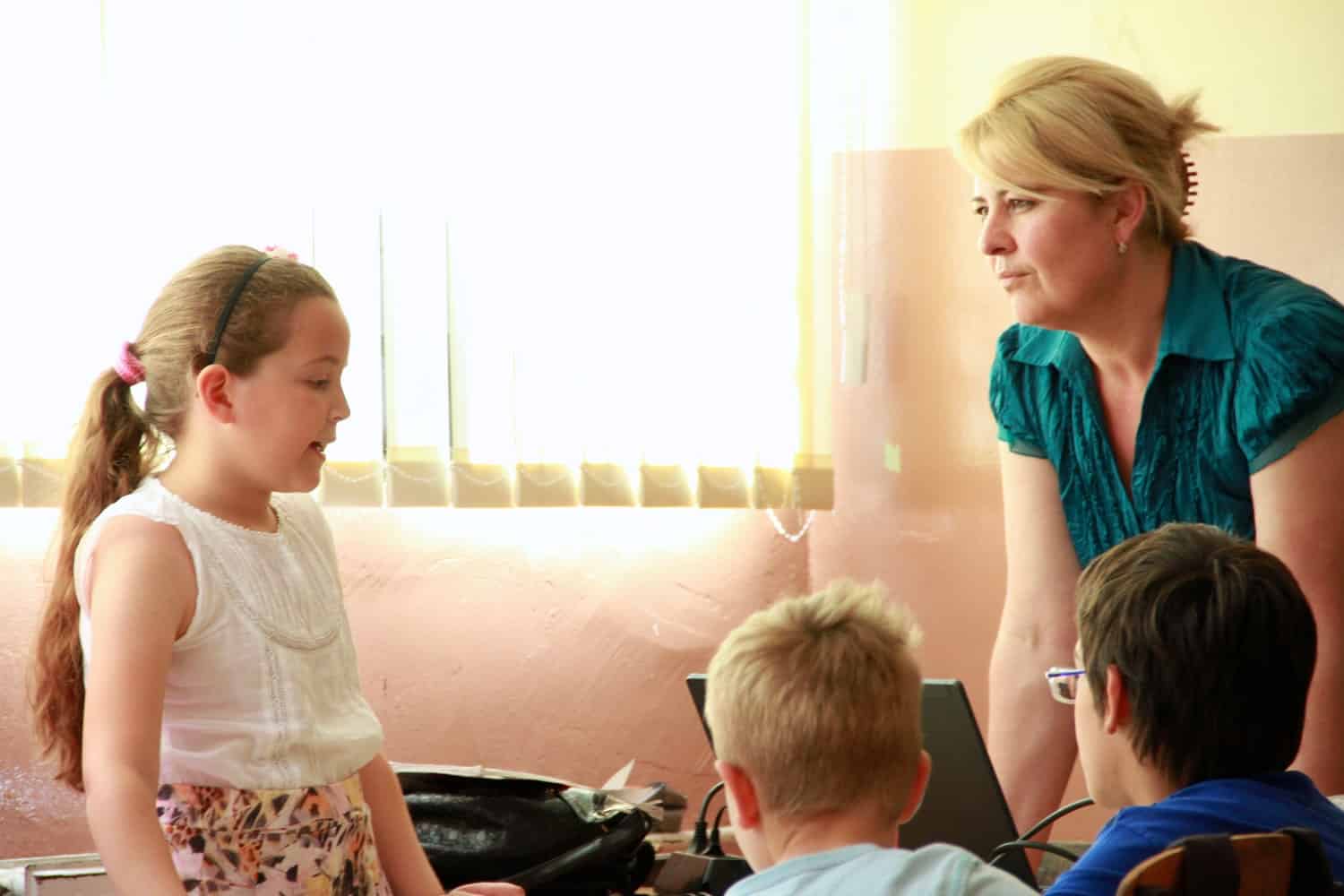As an educator, it’s both normal and important to guide your students through challenging discussions in class. Your students are affected by social, political, and other topics both in and outside of school. Although they can be difficult at times, conversations about these topics can help students come to a deeper understanding of and respect for those with perspectives different from their own.
These nine tips will help you structure your upcoming difficult discussions. They’ll also guide you to cultivate an atmosphere of mutual respect and help every student feel comfortable participating.
1. Plan the discussion with specific goals in mind.
Determine several specific goals for each conversation, like helping students understand a new perspective or finding common ground on a controversial issue. Your goals will help keep the discussion focused.
Remember to keep these goals developmentally appropriate for the students you are teaching. Students in older grades, for example, will be ready to discuss topics at a more complex level than students in early elementary school.
The Center for Innovative Teaching and Learning at Indiana University Bloomington suggests presenting these goals to your students at the beginning of the conversation. You can even determine a few more goals with your students to keep the discussion focused on their needs.
 2. Set a respectful tone for the discussion early on.
2. Set a respectful tone for the discussion early on.
It’s easy for discussions to derail, especially when divisive topics bring up strong emotions. The Vanderbilt University Center for Teaching encourages teachers to be a role model for their students by using respectful tone and avoiding character attacks.
If a student uses unsympathetic language or interrupts another student while discussing the topic, remind them that your classroom is a community and that it is not okay to treat another student unkindly.
3. Be aware of individual student traumas.
Some students may have a difficult time discussing a topic because of past traumas or backgrounds. If you are talking about racism in the United States, for example, students who have been a victim of harassment or violence due to their race may feel particularly vulnerable during this conversation.
In an article with Learner’s Edge, educator Kelly Swartzer recommends telling these students about the upcoming topic beforehand. From there, they can determine whether to not participate or arrange to take breaks during the discussion. You could also encourage these students to follow up with you afterward so you can make sure they are in a safe place.
Because you may not be aware of all student experiences, it can be helpful to announce the discussion topic in class a few days beforehand. That way, students with personal traumas can come to you and determine the healthiest way for them to participate. Also, let all students know that if the discussion brings up problematic emotions, they are welcome to bow out at any time.
4. Provide classroom rules as a framework for the discussion.
Going over a few classroom agreements beforehand can help keep the discussion open-minded and respectful. You can come with a list of group rules for your class or brainstorm them with your students before you begin the discussion.
Here are a few suggestions from The University of Montana to get you started:
- Listen actively with an ear to understanding others
- Criticize ideas and/or behaviors, not individuals
- Avoid blame, speculation, and inflammatory language
5. Give every student an opportunity to share their voice.
Some students may feel more comfortable speaking than others. Remind your class that every student’s perspective is welcome during the discussion, but that they do not have to feel pressure to speak if they are not ready.
Additionally, EducationWorld suggests offering alternative methods of participation for students who might not feel comfortable speaking out loud. You could, for example, have students submit comments beforehand or allow them to write out their thoughts and bring them to you for sharing.
6. Establish common ground while discussing divisive topics.
When difficult topics arise in class discussion, your students may find that their opinions are so different that they are hard to reconcile. Help your class acknowledge those with differing beliefs by finding principles or beliefs that they can agree on.
If you’re having a difficult discussion on climate change, as an example, your students may not agree on the best way to solve it. But they may all agree that the Earth is important to preserve and that humanity has to play a part in this goal.
 7. Lean into discomfort when it arises.
7. Lean into discomfort when it arises.
It is normal—and maybe even expected—for discomfort to arise while talking about tough topics. According to Teaching Tolerance, discomfort provides an opportunity for students to reflect and deepen their understanding of these topics.
If you sense that your students feel discomfort, acknowledge this feeling and ask them to reflect on why that may be. This can lead students down paths of more meaningful conversation as they reflect on their feelings about the topic.
8. Encourage students to listen and ask questions.
New York Times contributor Katherine Schulten emphasizes the importance of active listening during tough classroom conversations. If students have strong beliefs on a topic, they may feel compelled to share their opinion without listening to others. But only through listening to one another can students come to a greater understanding.
If a student is having trouble seeing a topic from a classmate’s perspective, encourage them to ask sincere questions about why their classmate sees it that way. In this, both students can come to an understanding and mutual respect of the other’s perspective.
9. Make time for reflection at the end of the discussion.
At the end of the discussion, leave a few minutes for students to reflect individually or as a group on what they learned. This reflection can also give you a better idea of what worked well for your students and how to improve for next time.
These sample questions from the Washington University in St. Louis Center for Teaching and Learning can help you structure this post-discussion exercise:
- What is the most important idea or insight that came out of this discussion?
- What is one idea, fact, or viewpoint that you would like to learn more about?
- What wasn’t discussed that should have been discussed?

